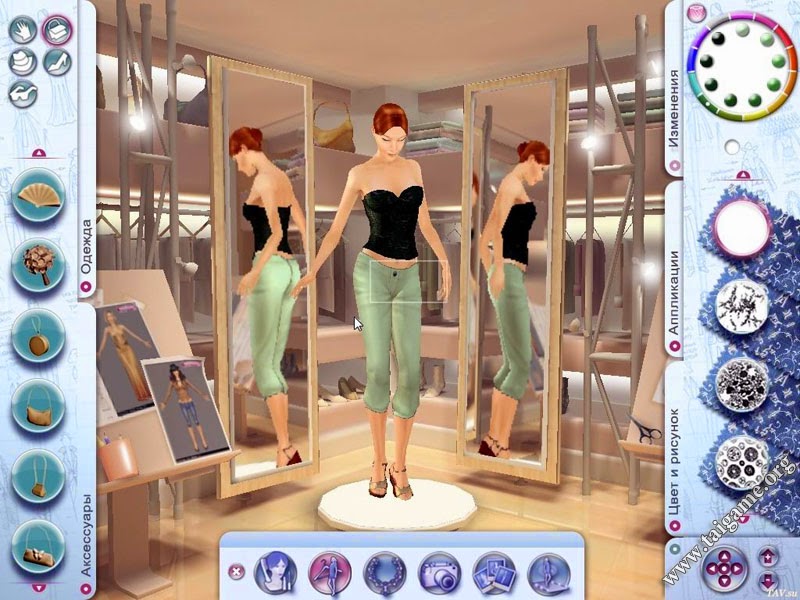Fashioning the Future: Designing Clothes Games Online in 2025
Related Articles: Fashioning the Future: Designing Clothes Games Online in 2025
Introduction
In this auspicious occasion, we are delighted to delve into the intriguing topic related to Fashioning the Future: Designing Clothes Games Online in 2025. Let’s weave interesting information and offer fresh perspectives to the readers.
Table of Content
Fashioning the Future: Designing Clothes Games Online in 2025

The realm of online gaming is constantly evolving, and fashion has emerged as a captivating genre, particularly in the realm of dress-up and design games. As we look towards 2025, the landscape of online clothes games is poised for significant advancements, driven by technological innovations, evolving player expectations, and a growing global interest in fashion.
The Evolution of Online Clothes Games:
The evolution of online clothes games can be traced back to the early days of the internet, with rudimentary dress-up games offering limited options. However, advancements in technology, particularly in graphics and user interface design, have transformed these games into immersive experiences. Today, players can engage in a wide range of activities, from creating virtual wardrobes to designing complete fashion lines.
Key Trends Shaping the Future:
1. Immersive Virtual Worlds:
The integration of virtual reality (VR) and augmented reality (AR) technologies will significantly enhance the immersion and interactivity of online clothes games. Players can step into virtual fashion shows, interact with other players in a simulated fashion district, and experience the thrill of seeing their creations come to life in a 3D environment.
2. Personalized Fashion Experiences:
Players will have greater control over their virtual identities, customizing every aspect of their avatars, from body type and skin tone to hair and clothing. This level of personalization will extend to the design process, allowing players to create unique garments with intricate details and textures.
3. Social and Competitive Gameplay:
Social interaction will play a pivotal role in online clothes games, fostering communities of fashion enthusiasts. Players can collaborate on design projects, participate in fashion challenges, and showcase their creations in virtual boutiques or online galleries. Competitive elements, such as fashion contests and runway shows, will add an exciting layer of gameplay.
4. Integration with Real-World Fashion:
The lines between virtual and real-world fashion will continue to blur. Online clothes games will offer opportunities to collaborate with real-world designers, brands, and retailers, bringing virtual creations to life in physical garments or allowing players to purchase virtual items inspired by real-world fashion trends.
5. Gamified Learning:
Online clothes games will serve as educational platforms, introducing players to the intricacies of fashion design, textiles, and the fashion industry. Players can learn about color theory, garment construction, and the history of fashion through interactive tutorials and challenges.
Designing for the Future:
To create compelling online clothes games in 2025, developers need to consider the following factors:
1. User-Friendly Interface:
The design process should be intuitive and accessible to players of all skill levels, offering a range of tools and options for both beginners and experienced designers.
2. High-Quality Graphics and Animations:
Visually stunning graphics and smooth animations are crucial for creating an immersive and engaging experience. Realistic textures, intricate details, and dynamic movement will enhance the sense of realism and inspire creativity.
3. Robust Social Features:
Online clothes games should foster a strong sense of community, allowing players to connect, collaborate, and share their creations. Social features such as chat, forums, and virtual events will enhance the social experience.
4. Engaging Gameplay Mechanics:
The gameplay should be engaging and varied, offering a balance of creative freedom and challenges. Quests, challenges, and competitions will keep players motivated and provide opportunities for growth and achievement.
5. Monetization Strategies:
While free-to-play models are prevalent, developers need to consider sustainable monetization strategies. In-app purchases, subscriptions, and partnerships with brands can generate revenue while providing players with additional content and features.
FAQs about Designing Clothes Games Online in 2025:
Q: What technologies will be crucial for designing online clothes games in 2025?
A: VR, AR, AI-powered design tools, and advanced graphics engines will be essential for creating immersive and interactive experiences.
Q: How can online clothes games be made more accessible to players of all skill levels?
A: Offering a range of tools and options for different skill levels, providing tutorials and guides, and creating a supportive community environment will enhance accessibility.
Q: What are the ethical considerations for designing online clothes games?
A: Developers must be mindful of issues such as body image, diversity representation, and responsible consumption, ensuring that the games promote positive values and inclusivity.
Q: How can online clothes games be used for educational purposes?
A: Integrating educational content, such as tutorials on fashion history, design principles, and textile knowledge, can make learning engaging and interactive.
Tips for Designing Clothes Games Online in 2025:
1. Focus on User Experience:
Prioritize creating a user-friendly interface that allows players to easily navigate and interact with the game.
2. Embrace Creativity:
Provide players with a wide range of tools and options for expressing their creativity, allowing them to design unique and personalized garments.
3. Foster a Strong Community:
Encourage social interaction and collaboration, creating a vibrant community of fashion enthusiasts.
4. Stay Ahead of Trends:
Keep abreast of emerging technologies and trends in the fashion industry to create innovative and engaging experiences.
5. Seek Feedback and Iterate:
Continuously gather feedback from players and iterate on the game design to ensure a positive and engaging experience.
Conclusion:
Designing online clothes games in 2025 presents a unique opportunity to create immersive, interactive, and engaging experiences that tap into the growing global interest in fashion. By embracing technological advancements, fostering community, and prioritizing user experience, developers can create games that inspire creativity, foster learning, and connect players with the world of fashion in exciting new ways. The future of online clothes games is bright, promising a fusion of technology, creativity, and social interaction that will redefine the way we engage with fashion.







Closure
Thus, we hope this article has provided valuable insights into Fashioning the Future: Designing Clothes Games Online in 2025. We thank you for taking the time to read this article. See you in our next article!